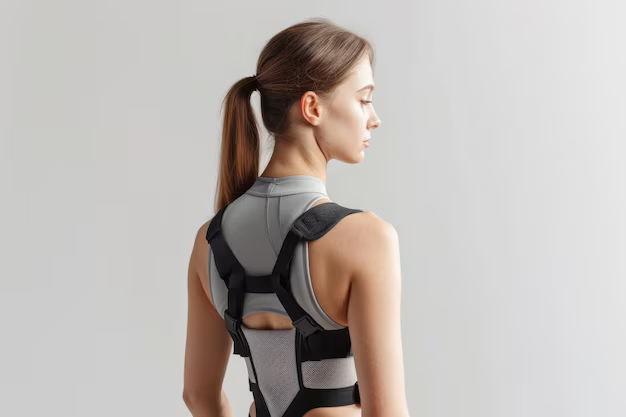Understanding Scoliosis: Does It Worsen with Age?
For anyone living with scoliosis, a common question lingers: Does scoliosis get worse with age? This question is not only important for those diagnosed but also for family members and caregivers looking to understand the long-term implications. While scoliosis—a curvature of the spine—varies greatly in its development from person to person, grasping its behavior over time helps in managing expectations and making informed decisions.
What Is Scoliosis?
Scoliosis is characterized by an abnormal lateral curvature of the spine, often shaped like an "S" or "C". This condition can present at any age but is most commonly diagnosed in children and adolescents. There are several types of scoliosis, including:
- Idiopathic Scoliosis: The most common form, with no known cause.
- Congenital Scoliosis: Resulting from spinal abnormalities present at birth.
- Neuromuscular Scoliosis: Associated with neurological or muscular conditions.
- Degenerative Scoliosis: Occurring in older adults due to spinal degeneration.
Understanding these types is essential when considering how scoliosis may evolve with age.
The Role of Age in Scoliosis Progression
Adolescents: A Period of Rapid Change
In adolescents, scoliosis often manifests during growth spurts. During this period, the spine is highly susceptible to curvature changes due to rapid bone growth and hormonal changes. The progression of scoliosis in teenagers depends on several factors, including:
- Growth patterns: Faster growth can result in quicker curvature progression.
- Genetic predisposition: Family history of scoliosis can influence the likelihood of progression.
Scoliosis in Adulthood
Once growth plates fuse in adulthood, scoliosis progression tends to slow down significantly. However, this does not mean the condition is static. Adults with scoliosis should be mindful of the following:
- Weight Gain: Extra weight can exacerbate spinal curvature and related symptoms.
- Lifestyle Factors: Sedentary lifestyle or poor posture may influence discomfort associated with scoliosis.
- Bone Health: Conditions like osteoporosis can weaken the spine, impacting scoliosis severity.
Aging and Degenerative Scoliosis
As people age, even those without scoliosis history might develop degenerative scoliosis, unrelated to the adolescent types. This form is linked to:
- Disc degeneration: Worn-out spinal discs can lead to curvature.
- Osteoporosis: Weakened bones may contribute to spinal abnormalities.
- Arthritis: The wear and tear on spinal joints can promote scoliosis.
Factors Influencing Scoliosis Progression
Genetic Factors
Genetics play a crucial role in scoliosis progression. Individuals with a family history of scoliosis are more likely to experience curve progression. Genetic research is continually evolving, offering insights into why some individuals may experience a more aggressive progression.
Lifestyle and Environmental Influence
Lifestyle choices such as physical activity level, diet, and ergonomic considerations can affect scoliosis. For instance, engaging regularly in spine-strengthening exercises can help maintain muscle support around the spine, potentially reducing curve progression.
Comorbid Health Conditions
Other health conditions like obesity, neurological disorders, and connective tissue diseases can impact scoliosis. They may accelerate the curve progression or influence symptom severity and management.
Managing Scoliosis Over Time
Regular Monitoring
For both adolescents and adults, regular check-ups with healthcare professionals are vital. Monitoring allows for timely interventions and adaptations to management strategies if the condition changes.
Physical Activity
Engaging in low-impact exercise such as swimming or yoga can improve flexibility, strengthen muscles, and relieve discomfort. Exercise not only enhances physical health but also supports mental well-being, which is crucial for managing a chronic condition.
Healthy Lifestyle Habits
Maintaining a healthy weight and good posture can alleviate additional stress on the spine. Nutritional considerations, focusing on bone-strengthening foods rich in calcium and vitamin D, are supportive of overall spine health.
Treatment Options and Interventions
Non-Surgical Interventions
- Bracing: Common in adolescents, bracing can prevent curve progression during growth spurts.
- Physical Therapy: Tailored exercises can help manage symptoms and improve posture.
- Pain Management: Addressing discomfort through medication or alternative therapies like acupuncture can improve quality of life.
Surgical Interventions
For severe curves or those rapidly worsening, surgery may be considered. Procedures like spinal fusion can correct the curve and stabilize the spine, though they come with inherent risks and considerations.
Proactive Management is Key to Living Well with Scoliosis
While scoliosis can progress with age, individuals can optimize their health through active management of the condition. Regular medical monitoring, a healthy lifestyle, and staying informed about recent advancements in scoliosis research empower those affected to live robust and fulfilling lives.
Quick Tips for Managing Scoliosis 🧘♂️📈
- 🕔 Regular Check-ups: Monitor your condition with medical professionals.
- 🚶♀️ Stay Active: Engage in low-impact exercises like yoga and swimming.
- 🍎 Maintain Healthy Weight: Extra weight can stress the spine.
- 💪 Strength Training: Focus on core exercises for spinal support.
- 🧘♂️ Mindful Posture: Good ergonomics can prevent discomfort.
- 🦴 Bone Health: Ensure adequate calcium and vitamin D intake.
- 🧣 Thermotherapy: Use heat pads for temporary pain relief.
- 🧠 Stay Informed: Keep up with new scoliosis research and management strategies.
